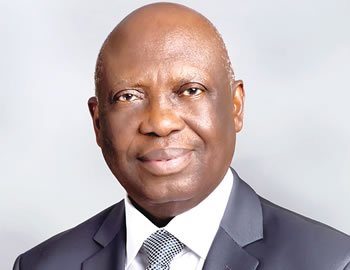There is the general misconception that with a vision and good intentions, a leader is made. But experience has proven contrary to that notion. While it is indubitable that the two may constitute the take off point of good leadership, they are certainly not the terminus. Any leader who hopes to bequeath a lasting legacy must bring more to the table than a compelling vision and a good intention.
The primacy of a good vision in a leader’s armoury is incontestable because it is the guide to the future. Without vision, there may be motion but it would be sans movement. Without a clearly-defined vision, the organization will be involved in wasteful deployment of resources, while the workforce will engage in fruitless exertion of energy.
Without vision, measuring success will be a tough call. But vision is nothing if it is not owned by the people. The force of a vision is determined by the commitment and persuasion of the people behind it.
In the same vein, good intention is not enough for a leader. As it is often said, the road to hell is paved with good intentions. So, a leader with good intentions may end up inflicting untold hardship on the people. Thus, for a leader who does not have more than a vision and a good intention, the journey to greatness has yet to begin.
The journey to greatness
For a leader to move from being a run of the mill leader to a great one, he must add to his vision and intention a number of other things.
A leader must inspire
However, different virtues in leaders appeal to different followers across the ages.
War-time British Prime Minister, Winston Churchill, still stands out as one of the greatest leaders of that country. The mention of his name evokes nostalgia decades after his demise. Why? What was the strength of Churchill? He was able to inspire the people when they were in a state of despair. During the Second World War, virtually everything that could go wrong had gone wrong with Britain. European countries were falling like a pack of cards to Hitler’s Germany, yet Churchill refused to capitulate. Rather, he kept raising the hope of the people through his oration and positivity.
When the war was raging and it looked as if his country was doomed to fall to Germany’s superior fire power, Churchill said, “Hitler knows that he will have to break us in this island or lose the war. If we can stand up to him, all Europe may be free and life of the world may move forward into broad, sunlit uplands. But if we fall, then the whole world, including the United States, including all that we have known and cared for, will sink into the abyss of a new Dark Age made more sinister, and perhaps more protracted, by the lights of perverted science. Let us therefore brace ourselves to our duties, and so bear ourselves that, if the British Empire and its Commonwealth lasts for a thousand years, men will still say, ‘This was their finest hour!’”
At the end, he was not just able to win the hearts of the people through his inspiring words, the tide turned against Germany and Britain was saved from what seemed an imminent defeat.
For Mahatma Ghandi, his strong point was humility. As a leader, though Ghandi was ahead of the people intellectually, he was among them in the physical. He was just like one of them; from all indications, an ordinary man. But his strength was his humility. With humility and seeming ordinariness, he inspired the people. They flocked round him and looked up to him for instruction and direction. Although he was leading a resistance, he was neither provocative nor at any point got provoked. With his passive resistance philosophy, he led his country to freedom from the British colonialists. Till date, Ghandi is still regarded in India as the epitome of leadership.
Chief Obafemi Awolowo is held in awe over half a century after he left office as Premier of the defunct Western Nigeria and decades after his translation. Awo is perceived as a leader who inspired his followers through his profundity and quality service. Awo had the reputation of a leader who would take the time to think through any problem with a view to coming up with a solution that would improve life. He would not stop at the point of generating solutions but would ensure the implementation of same as well. He was clearly ahead of his contemporaries in more ways than one.
Hence, he was able to bequeath a long list of legacies which time has not been able to render irrelevant.
Apart from his vision of liberating the blacks in the United States from the shackles of second class citizenship, the strength of Martin Luther King Jr. was his charisma. He was a passionate leader who struck the right chord in his people with his charisma.
According to Peter Ling, in his book, Martin Luther King’s Style of Leadership, King’s “leadership was not confined to fine speeches. In private meetings, King was generally quiet. He listened while others argued, often angrily and at length, and then he would calmly sum up the debate and identify a way forward. From the outset of his career in Montgomery in 1955, right through to his death in 1968, King had a remarkable ability to get people, who would otherwise be constantly feuding, to work together. He was consistently reluctant to sever or sour relations with anyone who might help the cause. This was particularly important because a by-product of racism was a pronounced tendency to factionalism inside the black community. King became the vital centre – a point of balance and unity.”
King’s charisma was so strong that his presence calmed frayed nerves.
A leader can inspire the followers in a number of ways. It is his responsibility to find out where his strength lies, develop same and draw from it to inspire the people as occasions demand. Anyone who cannot inspire has not begun the leadership journey.
Priority
One other hallmark of great leadership is prioritization. Anyone who wants to make a success of leadership must learn to take seriously the most important things. A leader is invited to everything but he does not have to do everything. As a matter of fact, he cannot do everything. What every outstanding leader does is to find out what it is that only he, and nobody else in the organization, can do and focuses on those. Everything else is delegated. The most important job of the leader is to do the most important task. He does not sacrifice the important on the altar of the urgent. He must avoid allowing himself to be bogged down by trivial or routine tasks. The pace at which an organization moves is often determined by how clear-headed the leader is about what the most important things are.
Peter Drucker’s counsel to leaders is quite valid; “Do first things first and second things not at all.”
Good decisions
Organisations are made or ruined by the quality of the decisions made by those at the helm. If good decisions are consistently made, the organization’s fortunes are improved, if not the reverse is the case.
For this reason, and to avoid carrying the can, some leaders are wont to shift the responsibility for taking hard decisions to others. But that is more disastrous than advantageous because at the end of the day, the buck stops on the leader’s table.
While it is good for a leader to consult widely before taking a decision, no leader who is worth his weight in gold avoids taking hard decisions. Passing the buck of decision making is the wrong way to go.
Clear communication of expectations
A good leader never leaves his people disoriented. But that is what happens when a leader fails to be on the same page as to what his expectations are of his people. Before a subordinate can be properly assessed, he must not be in doubt about his tasks and his targets. Communicating the expectations helps the leader a great deal because anyone who falls short of the expectation will not be in doubt and would likely be more disposed to taking the blame. So, communicating the expectations frees the leader of any moral burden and enables him to discharge his duty without let or hindrance.
A team player
A great leader does not scare people away from him; rather he is able to maintain a delicate balance of interacting with his team while still maintaining authority. By maintaining the right relationship with other team members he creates the right atmosphere for optimum productivity.
By being a good team player, a leader does not build a wall around himself, rather, he builds bridges. He goes out of his way to establish strong relationship with others.
A great leader is never out to pull down others. Instead, he stretches himself to build up as many people as he has the opportunity of relating with. By making himself accessible, he provides the opportunity for others to learn from him, thus ensuring that he carries out one of the most basic functions of leadership, which is mentoring.







